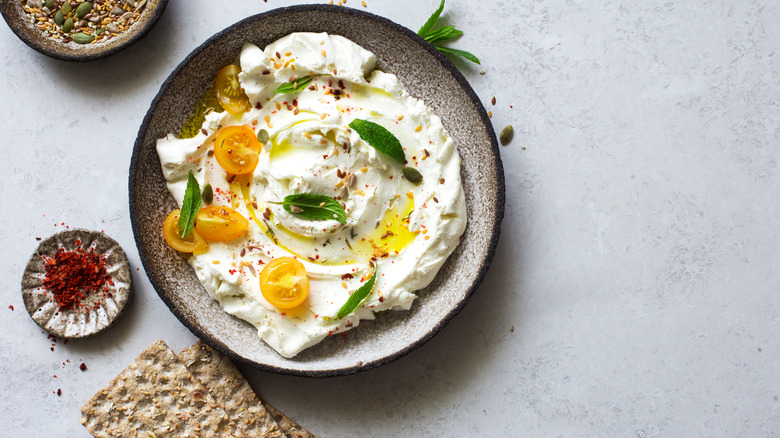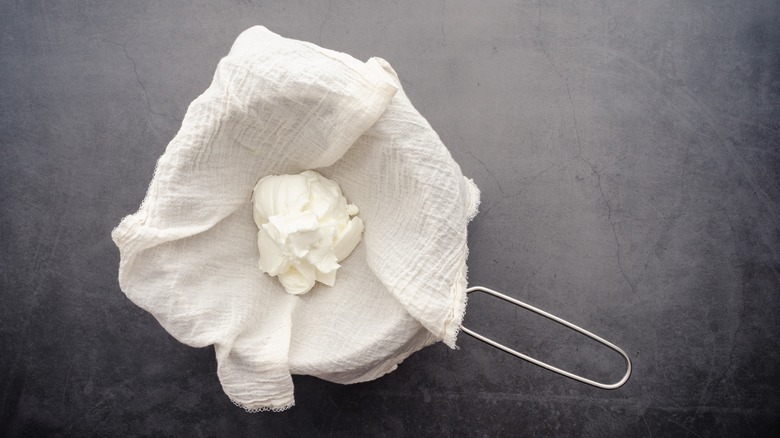Homemade Labneh Requires Only 2 Ingredients
Middle Eastern cuisine is one of the most delicious and beautiful styles of cooking in the world. The blog Family Search explains that Middle Eastern cuisine encompasses areas found around the Mediterranean, Red, Arabian, and Caspian Seas. Known for its use of fragrant spices, fresh herbs, and a generous number of vegetables, the Middle East introduced the world to dishes such as Egyptian falafel, Arabic tabbouleh, and Turkish dolma. While each country has its culinary specialties, there are several dishes that transcend borders and are beloved in multiple regions. Examples include the creamy chickpea spread, hummus, sweet, flaky baklava, and stuffed grape leaves, per The Spruce Eats.
You will also find shawarma, baba ghanoush, pita flatbread, and lots of lentils across the Middle Eastern nations, according to Spoon University. And if you're familiar at all with Middle Eastern cuisine, you probably know that a creamy bowl of labneh is regularly served at meals. At its most basic, labneh is strained yogurt. And the longer the yogurt is strained, the thicker it becomes, making labneh a wonderful consistency, great for spreading. MasterClass explains that it is often thick and the flavor is tangy, like sour cream. Perhaps the best part about labneh is that it is incredibly simple to make. All you need is two ingredients and a little time.
Two kitchen staples: yogurt and salt
Yotam Ottolenghi is an Israeli-born chef, cookbook author, and restaurateur who has won numerous awards and accolades for his expertise in Middle Eastern and Mediterranean cuisine, according to Happy Foodie. Ottolenghi shares his list of labneh ingredients with MasterClass: yogurt and salt. The yogurt must be plain, non-Greek, full-fat yogurt to yield the best results. For this basic labneh, the chef mixes yogurt and salt together in a bowl before placing the mixture in a colander that has been lined with cheesecloth. Ensure the colander sits over the bowl and the cheesecloth islong enough to cover the top of the yogurt, then places a couple of heavy cans on top and let the bowl rest in the refrigerator for up to two days. At this point, most of the moisture will have drained into the bowl and what will be left in the cheesecloth is a rich, thick, creamy ball of labneh.
Serious Eats suggests serving the labneh drizzled with olive oil and za'atar seasoning and scooping up with pita or vegetables. The labneh can also be used as a base for a variety of dips. Think of it as a spread and treat it as such for things like slathering on bagels and sandwiches or using it in desserts that call for cream cheese. You really can get creative with this easy, versatile, and delicious dish.

